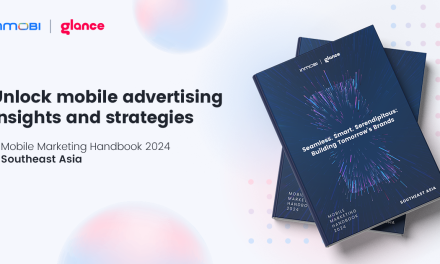99% of online consumers use at least one social media account.
Nearly nine in ten (87%) Singapore consumers spend over two hours a day scrolling through social media on their mobile devices. The most popular social platforms include Facebook, YouTube, Instagram, and TikTok.
This is according to a study by Integral Ad Science (IAS), a global leader in digital media quality. It’s report Social Ads and Consumer Perception study – Singapore Edition, based on a survey of over 500 Singapore consumers, provides an overview of social media usage and insights into user perceptions of social media in-feed ads. In-feed ads are a format inside a user’s social feed.
Social media ad spending in Singapore grew by 33%
According to Magna, social media ad spending in Singapore grew by 33% in 2021. Digital advertising will continue outperforming linear advertising formats and eventually represent 60% of total advertiser budgets by 2026, with social media as a key priority. An increase in spending makes it crucial for brands to focus on media quality to maximize their budgets on social platforms.
“Social media has become a mainstream platform for advertisers to engage with the online consumers. This report shows that nearly nine out of ten online Singaporeans have engaged with an ad on social media in the past year, and that six out of ten feel favorable towards brands with contextually relevant messaging. Social media consumers are discerning about ad adjacencies and brands must make sure that their ads are contextually relevant. While 67% of consumers hold social media platforms responsible for ads appearing near unsafe content, it is equally important that brands take the onus and direct their agency partners to help them align with what’s relevant and avoid unsuitable content. A key aspect of this is working with a trusted media quality partner,” said Laura Quigley, SVP APAC at IAS.
The new study revealed the following about consumers’ social media behaviour and how brands can adapt this year:
- Social media is an effective channel for advertisers to reach online consumers in Singapore: A huge majority (99%) of Singapore consumers have at least one social media account in use. Close to nine in ten (89%) consumers have engaged with an ad on social media in the past year, with 29% having purchased a product or service advertised.
- Online consumers are more discerning of inappropriate ads and more cautious of the ads they see on their feeds: The growth of fake news has made consumers less trusting of the ads they see on their social feeds (43%). 64% believe that the personal content of social media makes them more aware of inappropriate ads on social platforms. The study shows that 99% of online consumers hold social media platforms and brands and advertisers responsible for ads appearing next to unsafe content.
- Content adjacent to a brand’s ad in social feeds can be deemed inappropriate, and negatively impact perceptions and behaviours towards brands: 29% of online consumers will have an unfavourable view of a brand whose ad appears next to content that does not align with the brand’s image. 47% are unlikely or very unlikely to purchase a product/service advertised on social feeds that is next to unsafe content.
- Contextually relevant advertising generates brand favorability and intent to purchase: 60% social media consumers will feel favourable towards brands whose in-feed social ads appear next to content aligned with a brand’s image. Contextual relevance can also drive purchase intent, with 54% of consumers likely to make a purchase.
The results are based on the responses of 505 Singapore social media users in January 2022.


















